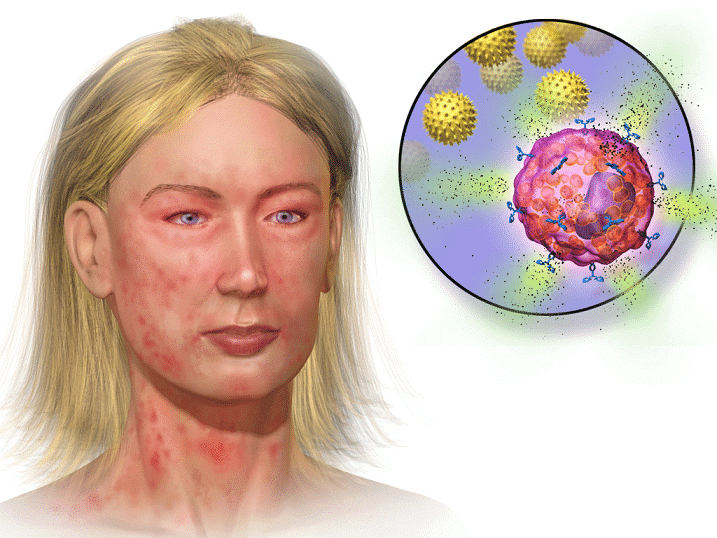Over 100 million people each year in the United States of America experience one or the other kind of allergy. While some have allergies from birth, others may acquire them over time. Mild allergy poses no mortal threat but severe ones could lead to anaphylaxis. A study conducted from 2006-2009, close to 100 people died due to untreated anaphylactic shocks. This number, even though small, indicates that you must never pass over an allergy as a minor medical issue.
Allergy attacks demand swift and informed anaphylaxis first-aid responses. Recognizing the causes and symptoms results in effective intervention. Read on to learn the basics of managing allergic reactions. From common triggers to fundamental treatment measures, empower yourself with the knowledge to navigate and respond confidently with anaphylaxis first aid techniques.
Do you do first aid for anaphylaxis?
You can take the required first aid steps to help someone in an anaphylactic shock. This line of treatment involves administering an epinephrine injection (if available), calling emergency services, and providing support until medical help arrives.
What causes anaphylaxis?
Severe allergic reactions to certain substances typically cause anaphylaxis. Here are key points:
- Allergens: Common triggers include foods (like nuts or shellfish), insect stings, medications, and latex.
- Immune Response: When people with allergies are exposed to the allergen, their immune system releases chemicals, causing a sudden and severe reaction.
- Symptoms: Rapid onset of symptoms like difficulty breathing, rash, or a drop in blood pressure.
- Severity: Anaphylaxis is a medical emergency and requires immediate intervention, usually with an epinephrine injection.
What is anaphylactic training?
Anaphylactic training teaches first aid for an allergic reaction. It involves educating individuals on recognizing, managing, and providing immediate aid in cases of anaphylactic reactions. This training typically covers the following aspects:
- Recognition: Identifying signs and symptoms of anaphylaxis, such as difficulty breathing, swelling, and a drop in blood pressure.
- Response: Knowing how to initiate emergency measures, including administering epinephrine (if available), calling for medical assistance, and positioning the person to aid breathing.
- Prevention: Understanding triggers and preventive measures, including the importance of carrying an epinephrine auto-injector for at-risk people.
This training is crucial for individuals who may encounter or care for someone with a severe allergic reaction, such as teachers, healthcare professionals, and caregivers.
Read More: First Aid for Hay Fever and Seasonal Allergies
How is anaphylaxis treated?
You can treat anaphylaxis, a potentially life-threatening allergic reaction, with prompt and decisive actions. You must know to recognize the first sign of anaphylaxis to provide help. The primary steps in managing anaphylaxis include:
- Administer Epinephrine: The immediate injection of epinephrine is the first-line treatment, taught in first aid classes. Epinephrine helps reverse the symptoms, such as airway constriction and a drop in blood pressure. An epinephrine auto-injector is commonly used for this purpose.
- Call for Emergency Medical Assistance: Call emergency services to request professional medical help after administering epinephrine.
- Additional Treatments: Other treatments depend on the severity of the reaction. It can include administering antihistamines or corticosteroids to help alleviate symptoms.
- Supportive Care: Provide supportive care, such as maintaining an open airway, assisting with breathing, and keeping the person lying down with their legs elevated to improve blood flow.
How can you prevent anaphylaxis?
Preventing anaphylaxis involves avoiding exposure to known allergens that can trigger a severe allergic reaction. Here are some simple steps to prevent anaphylaxis:
- Know Your Triggers: Identify and be aware of substances or allergens that can cause an allergic reaction. You must know first aid for food allergy at home to provide immediate help.
- Avoid Allergens: Steer clear of known allergens. Read food labels, check ingredient lists, and communicate your allergies to others.
- Carry Medication: Individuals with a history of severe allergies should carry an epinephrine auto-injector prescribed by their doctor. Learn how to use it and keep it with you at all times.
- Create an Action Plan: Work with your healthcare provider to create an emergency action plan. Share this plan with those close to you, such as family, friends, and coworkers.
- Raise Awareness: Educate those around you about your allergies, especially if you spend time with others who may need assistance in an emergency.
FAQ’s
1.What is the first sign for allergic reactions?
Redness around the face and cheeks is the first sign of anaphylaxis. It is usually accompanied by localized or general swelling of the body.
2. Is anaphylaxis training in first aid?
Yes, You can learn to deal with anaphylaxis when taking a the a first aid course from a recognized institute.
3.What are the three criteria for anaphylaxis?
The patient’s body should show these three classic symptoms to classify as anaphylaxis.
- Skin Symptoms: Hives, itching, or flushed skin.
- Respiratory Symptoms: Difficulty breathing, wheezing, or shortness of breath.
- Cardiovascular Symptoms: Rapid or weak pulse, drop in blood pressure, or fainting.
4.How common is anaphylaxis?
In the United States, anaphylaxis affects 1.6% to 5.1% of the population. The incidence has risen, with about 40-50 per 100,000 emergency department visits attributed to anaphylaxis. Food allergies, particularly to nuts, are common triggers for anaphylactic reactions.
5.How is anaphylaxis diagnosed?
Anaphylaxis is diagnosed based on clinical symptoms and signs. Healthcare providers assess the patient’s medical history, physical examination, and the timing of symptoms related to exposure to a potential trigger. Additionally, diagnostic tests such as blood tests, tryptase levels, and allergy tests may be used to support the diagnosis.
Read More: Asthma attack: causes and first aid
Conclusion
Allergies lead to anaphylaxis, which could often cause the body to go into shock. Knowing anaphylaxis first aid ensures you can respond proactively during a medical emergency and save a person’s life. Understanding the causes and treatments of this medical issue will help you act promptly and administer the proper medication.













